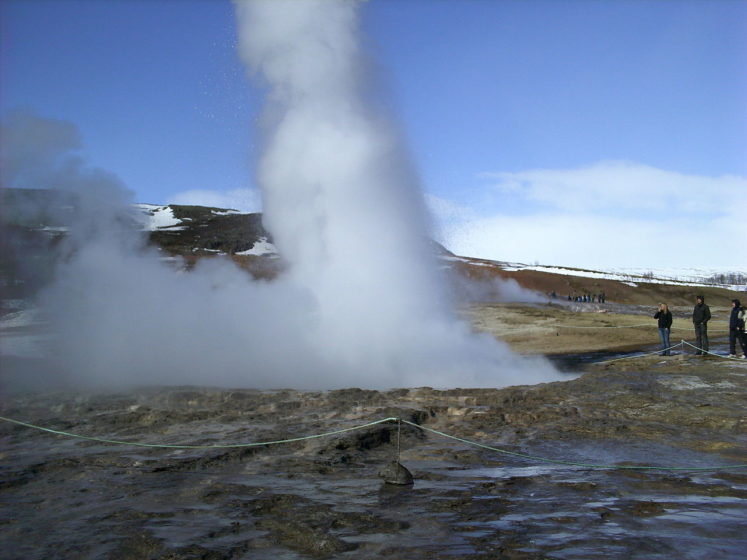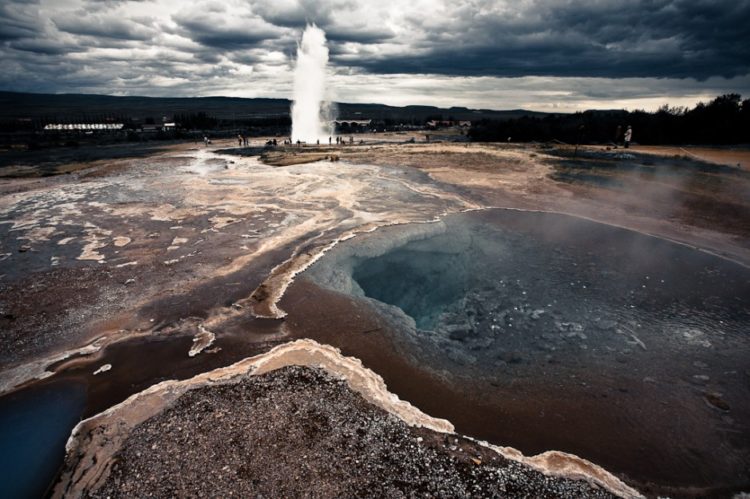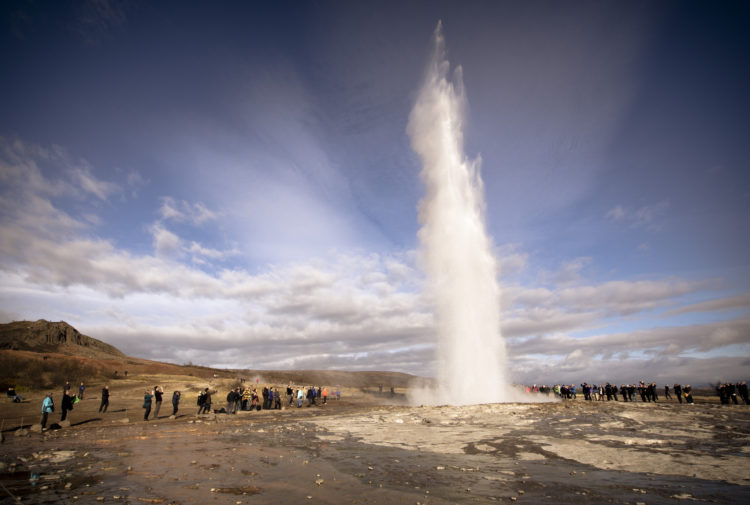In the land that gifted English the word Photo Volcanic “geyser,” Strokkur is one of the most impressive. Strokkur is a fountain geyser located in a geothermal area beside the Hvítá River in Iceland in the southwest part of the country, east of Reykjavík. It erupts every five to ten minutes or so. It is one of Iceland’s most famous geysers. Its usual height is 15 to 20 m, sometimes erupting up to 40 m high.
Strokkur belongs to Haukadalur valley where various geothermal features such as mud pools, fumaroles. The other geysers are located around it, such as the famous Geysir geyser. Strokkur and its surrounding areas regularly attract tourists hoping to see the geyser erupt. It is one of the very few natural geysers to erupt regularly and consistently. The term Geysir (Engl. Geyser) is itself derived from the Icelandic word “geysa” which means to gush.
Moreover, the eruption starts when a pulse of steam rising from below pushes the water in the pool upwards forming a large dome of water through which the steam bursts and expels much of the water in the pool skywards. Hence, after consistent eruptions, the pool gets empty but becomes quickly refilled by flow-back and water rising from underneath.
How does a geyser work? Basically, a geyser requires a heat source cooling magma, a source of water. Permeable rocks through superheated waters can rise and a pressure-tight chamber or series of chambers where pressure can build-up prior to eruption. Most geysers are found in highly silicic rhyolitic rocks.
Superheated waters dissolve silica from these rocks at temperatures of around 300’C which exists in a high-pressure environment deep under the surface. Silica resolves again and is deposited when the superheated waters boil or cool as pressure and temperature fall, respectively as they rise towards the surface. The deposited “geyserite” largely hydrated silicon dioxide seals the geysers plumbing system, allowing it to pressurize.
In 1789, Strokkur was first mentioned after a massive earthquake assisted to unblock the conduit of the geyser. The Strokkur geyser activities fluctuate throughout the many decades. The highest height was estimated to have been as much as 60 meters in 1815. It continued to erupt until the turn of the 20th century until another earthquake blocked the conduit again.
In 1963, upon the advice of the Geysir Committee, locals cleaned out the blocked conduit through the bottom of the basin. And then geyser has been regularly erupting ever since. The site currently belongs to the Icelandic state and is frequently visited as part of the Golden Circle tour. Which takes visitors to a number of sites in southern Iceland.
Both Strokkur and the Great Geysir form part of the Golden Circle, the most famous and well-traveled tourist route in Iceland. Strokkur Geyser is only a one-hour drive from Iceland’s capital, Reykjavík.
Read More – The Unusual Cold Geysers of Madagascar / The Catastrophic Disaster of Lake Nyon
Source Valley of Geysers

















